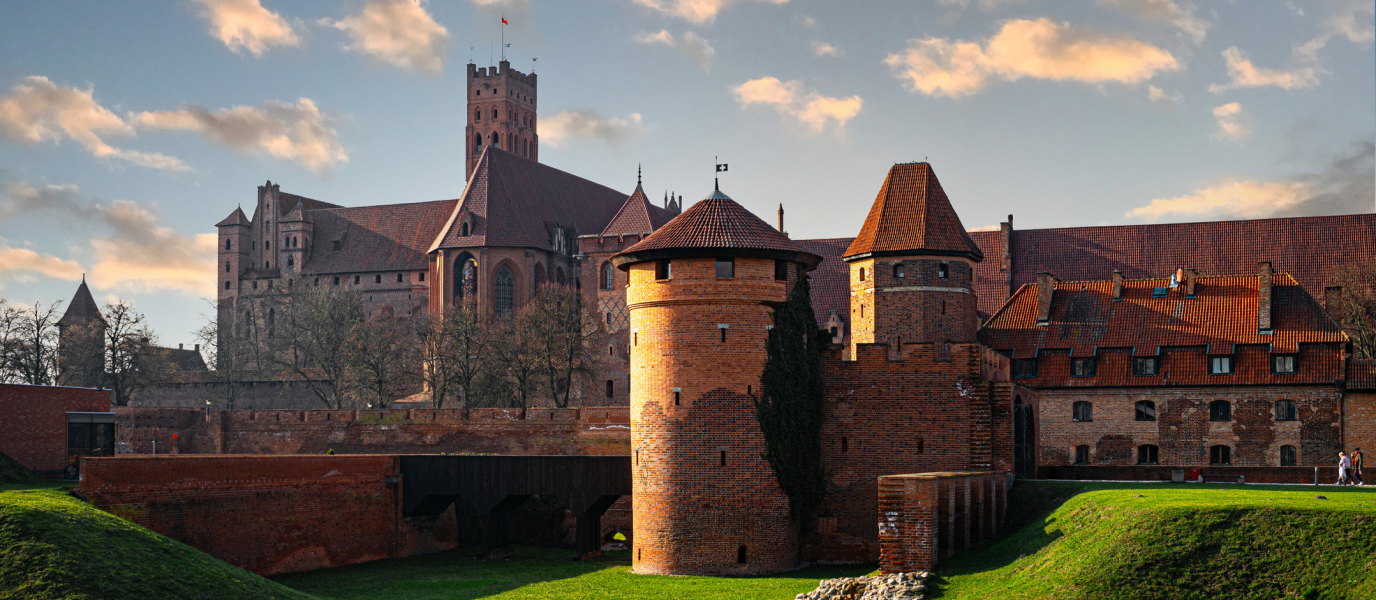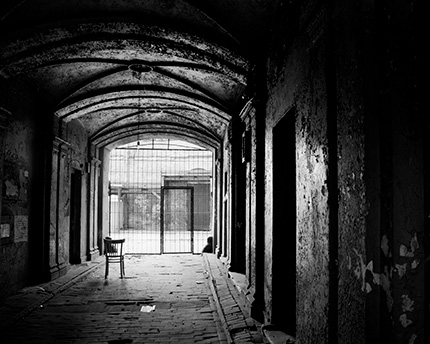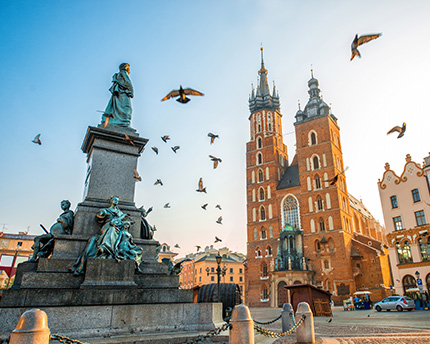Built as a military fortress on the orders of the Knights of the Teutonic Order, the imposing, formidable medieval castle of Malbork is the world’s largest brick-built edifice. The castle has held the status of UNESCO World Heritage Site since 1997. It was practically destroyed by theRussians after the Second World War, obviously because it was a symbol of Nazism. Today, the Teutonic Order fortress stands ‘reborn’ on the right-hand bank of the river Nogat (a tributary of the Vistula), and every day from May until mid-September, apart from Thursdays, it offers a spectacle of light and sound.
It should be noted that the Order of the Teutonic Knights of St. Mary’s Hospital in Jerusalem (better known as the ‘Teutonic Knights’) originated in the twelfth century in the Holy Land, where its aim was to assist sick or wounded German pilgrims. It became a religious and military order along the lines of the Knights Templar in 1191, when it placed itself under the exclusive authority of the Pope.
The history of Malbork Castle
Malbork Castle was built in two stages on a 21-hectare site. The monastery or high castle was constructed between 1280 and 1330, and the middle castle and low castle were added between 1330 and 1457.
The castle’s history began when the Teutonic Order created a theocratic state on the shores of the Baltic Sea, and established Marienburg (Malbork) as its capital. This was when it was decided to build a vast castle-monastery complex. In its quest to acquire land, the Order challenged the Polish monarchs, who defeated its claims during the battle of Grunwald in 1410. However, the castle continued to put up a resistance, and the Order did not leave until 40 years later, when it established itself in Königsberg (Kaliningrad).
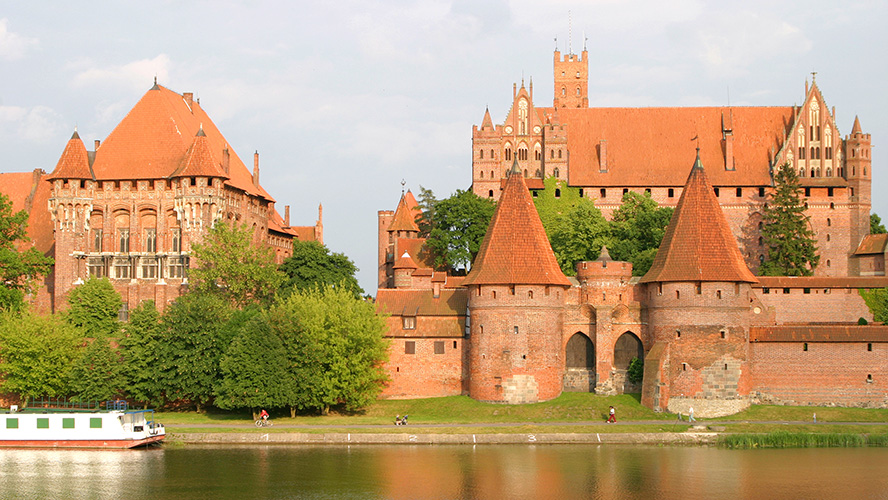
The fortress remained in the hands of the Polish monarchy until 1772, the date of the First Partition of Poland. Many years later, the Nazis used the castle as the scenario for their cinematic propaganda campaign, and later still, a good part of the complex was destroyed by the Russians. The Teutonic Order of Knights still exists; its headquarters are in Vienna, and it devotes itself to charitable works.
Visiting Malbork Castle
Malbork Castle (Poland) is divided into three parts: the low castle, with the arsenal and the church of St Lawrence; the middle castle, which was the setting for secular activity and contact with the outside world; and the high castle or monastery, the oldest part, reserved for members of the Order.
The Low Castle.The low castle was used by the servants and for economic purposes. It housed the arsenal and the former chapel of St. Lawrence. There are also several farm buildings.
The Middle Castle. This was the working heart of the Order, the place where the monks received guests, craftsmen and other visitors. You can see the infirmary, the former kitchens, and the vast refectory where the Grand Master gave his banquets. Here too are the private apartments, with two other refectories and the Order’s chancellery. The military rooms are to be found on the upper floor, and boast a valuable collection of weapons and armour, including some from the battle of Grunwald and some from the East.
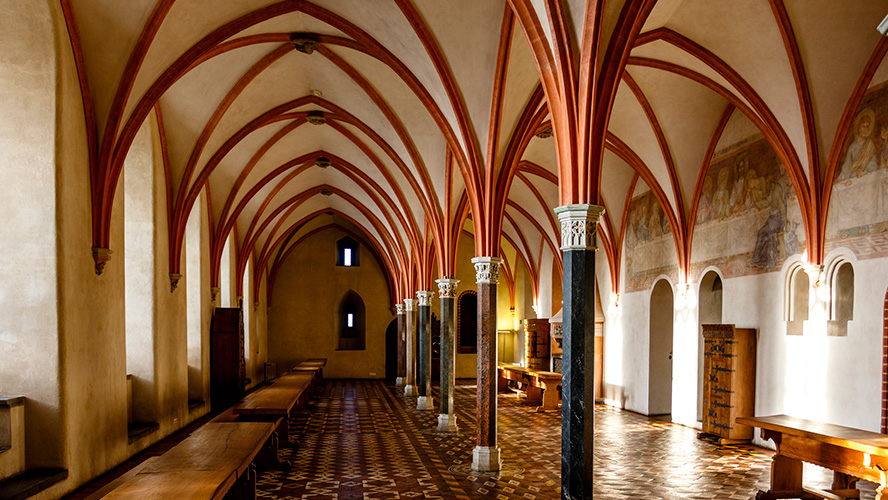
The High Castle. The high castle is reached by a drawbridge across the moat. It contains St Anne’s Chapel, which was the last abode of 12 of the Grand Masters, and a grain mill. Its magnificent inner courtyard has two storeys of arcades, and in the centre is a well with a pelican representing Christ. On the ground floor were the kitchens where the monks produced 12 different kinds of beer and a special wine reserved for the Grand Master. On the first floor, visitors can see the chapter house, where the Grand Master was chosen, as well as the treasure house, the latrine tower, an exhibition of religious sculpture, and an attractive, carved, wooden, spiral staircase. One of the castle’s most splendid highlights is the fourteenth-century Golden Gate, which provides access to St. Mary’s church and its valuable Triptych of the Coronation of the Virgin.
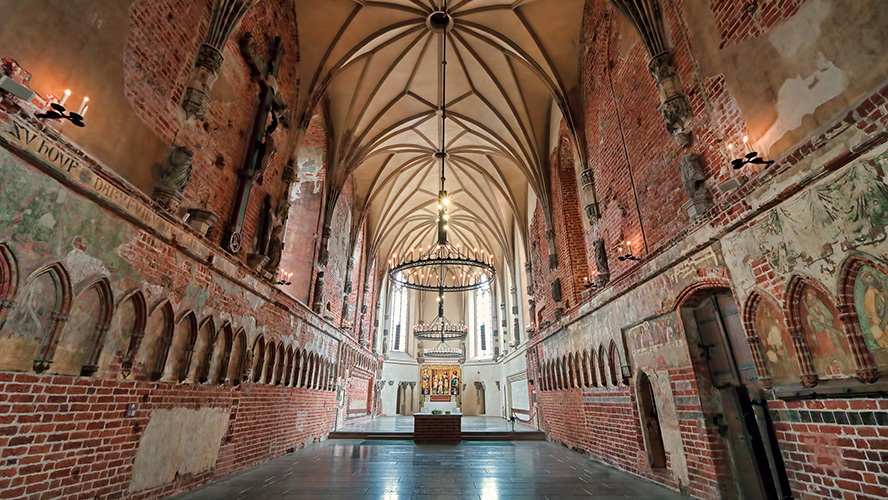
Information for visitors
Malbork Castle is open for unguided visits from Monday to Sunday, but it is recommended that visitors use the audioguide service which explains the 50 most important points of the tour in several languages: Polish, German, Russian, English and Spanish. There are two restaurants serving traditional Polish food and several souvenir shops, as well as a car park. The tour takes three and a half hours on average, so it is advisable to wear comfortable footwear.
The castle is open from 9.00 a.m. until 8.00 p.m. in summer and from 10.00 a.m. until 3.00 p.m. in winter. The price for general admission is 70 PLN (approximately 15 euros).
From May until mid-September, there is a daily sound and light spectacle (except on Thursdays). During the summer months, evening visits are available.
The Amber Museum
In the eastern wing of the middle castle, this curious museum displays many examples of raw and crafted amber, the fossilised resin so commonly found in the Baltic Sea area. The sale of amber accounted for half the business volume of the Order of Teutonic Knights, which had a monopoly on its supply and which conquered Gdansk in order to control the points of sale.




































































